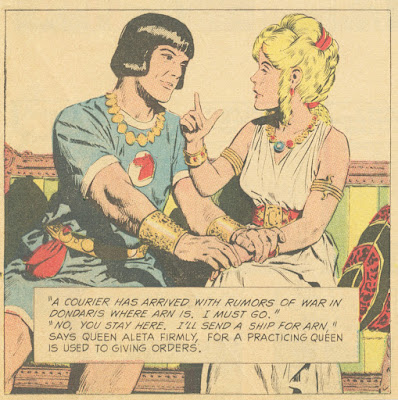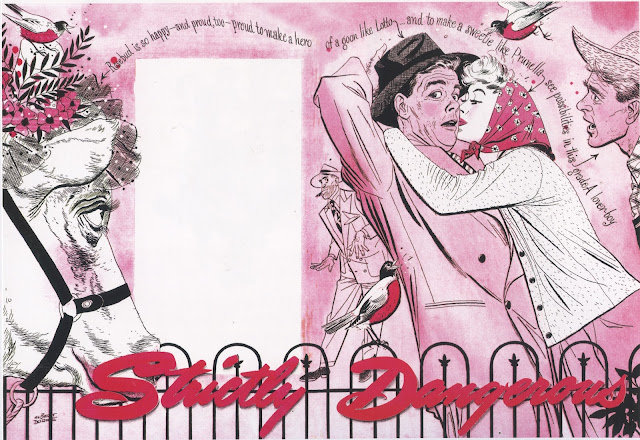I've said some unkind things here about cross hatching-- those intersecting lines that are used to add tone to a drawing.
Friday, May 03, 2024
JOSEPH CLEMENT COLL: THE ENEMY OF CROSS HATCHING
Monday, April 29, 2024
ONE LOVELY DRAWING, part 73
I love Frederic Gruger's drawing of a confrontation between a Russian princess and a group of leering Bolshevik invaders.
Gruger was famous for making paintings using nothing but a Wolff pencil, cheap cardboard and spit. (Later, he upgraded from spit to water and when he really began making money he added watercolor wash accents.)
Gruger's illustrations were striking for his ability to achieve rich velvety tones, but he also knew how to draw with a pencil point:
Gruger expertly staged his picture with details and lighting. Here is an artist who was firmly in control of the room.
But the feature I'd like to point out today is the faces of the mob in the background (reproduced here several times larger than the originals).
 |
| In the 1920s, without the benefit of the internet, Gruger captured the ruddy smiles of Eurasian peasants |
 |
| Each of these ruffians in the front row has a distinctive face, but note that as the faces get further into the background they dissipate into abstraction. They become shapes in a composition. |
Monday, April 22, 2024
ONE LOVELY DRAWING, part 72
This drawing by James Montgomery Flagg is as confident and brash as Flagg himself.
The drawing is large-- nearly 30 inches (76 cm) and appears to have been drawn mostly from the elbow.
Wednesday, April 17, 2024
ONE LOVELY DRAWING , part 71
Franklin Booth (1874-1948) learned to draw by studying wood engravings in magazines while he was growing up on a farm in Indiana. He mistakenly thought the engravings had been created with pen and ink, and so developed his highly unusual drawing style simulating engraving lines.
I usually prefer drawings with a more direct and expressive line, as opposed to clusters of lines used to create values. There always seems to be more painstaking effort than necessary in Booth's drawings. Still, when you look at extreme closeups of what Booth accomplished, you have to respect his consummate craft.
 |
| John Buscema, inks by Alfredo Alcala |
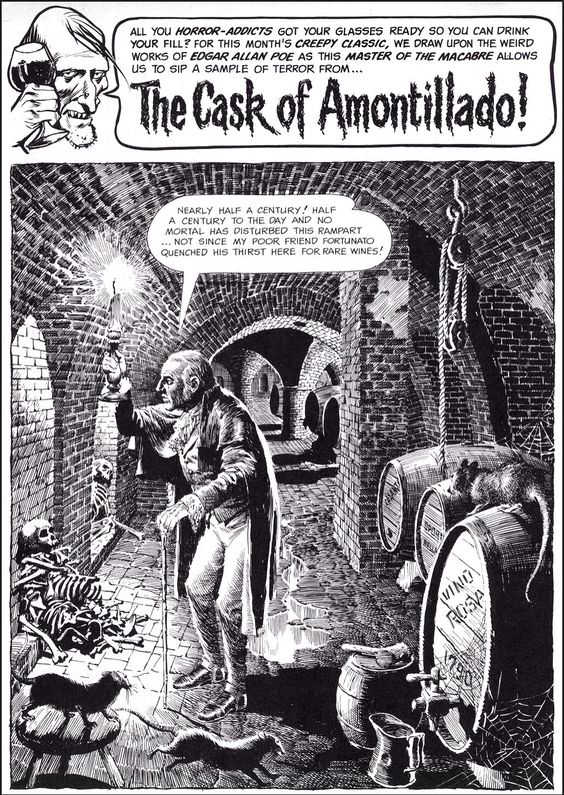 |
| Reed Crandall |
Saturday, April 06, 2024
MEN MUST ADVENTURE AND WOMEN MUST WEEP
The stories in comics, pulp magazines, science fiction and fantasy were never subtle about the proper roles for men and women. Here is Flash Gordon by the great Alex Raymond:
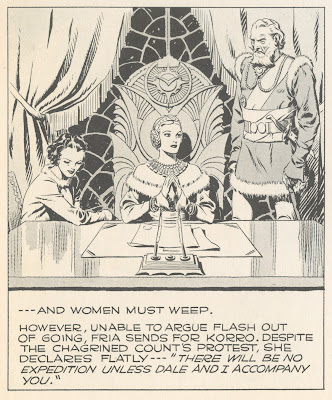 |
 |
 |
| Prince Valiant by Hal Foster |
"Albert, your drawing is swell but we are afraid our readers will not like it. The violent fiery red is a bit frightening, the interpretation too literal. We have found from our readership polls, etc. etc. Would you mind doing it over?"Dorne was irritated. He recalled, "The audience in mind being primarily women, I knew I couldn't actually show fire, so I... created the illusion of fire by lighting the picture with a deep fiery glow from off stage." But that wasn't sufficient. The picture's strong, high contrast treatment, with pointed fingers, sharp angles, extreme positions and facial expressions was still viewed as too yang for a female audience.
Cosmopolitan presented Dorne with "a layout designed in a much lighter vein and quite gay in its concept." The art director explained, "This is the sort of thing our readers like."
Dorne (a powerful, cigar smoking man and former prizefighter) bitterly started over and this time turned in a much softer, pinker, friendlier picture:
Friday, March 22, 2024
WHAT ALICE MOLLON UNDERSTANDS ABOUT INK
 |
| (Toshikage, 7 Gods Fighting with Ink, 1888) |
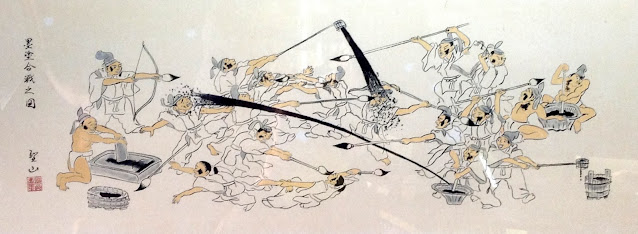 |
| (The Ink War) |
 |
| (Ralph Steadman, the Malevolence of War) |
But when it comes to the heart of ink, Alice Mollon may have a wiser understanding.
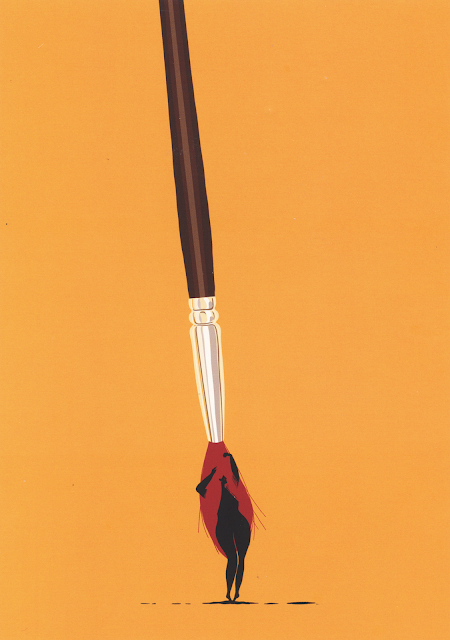 |
| Alice Mollon's illustration of ink slipping nude into the world |



































